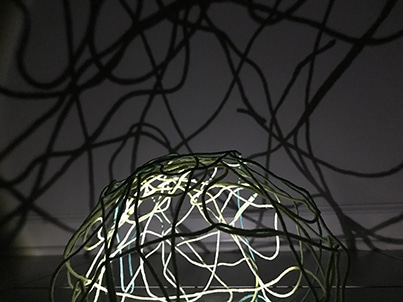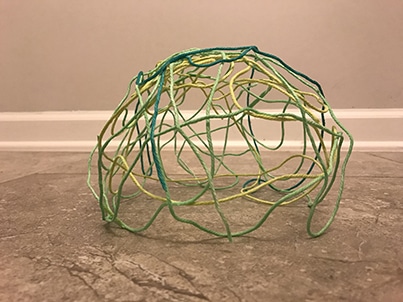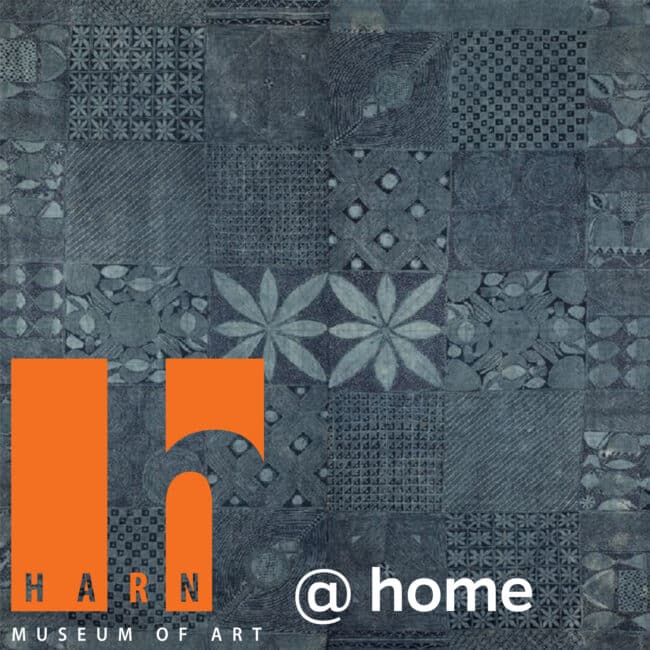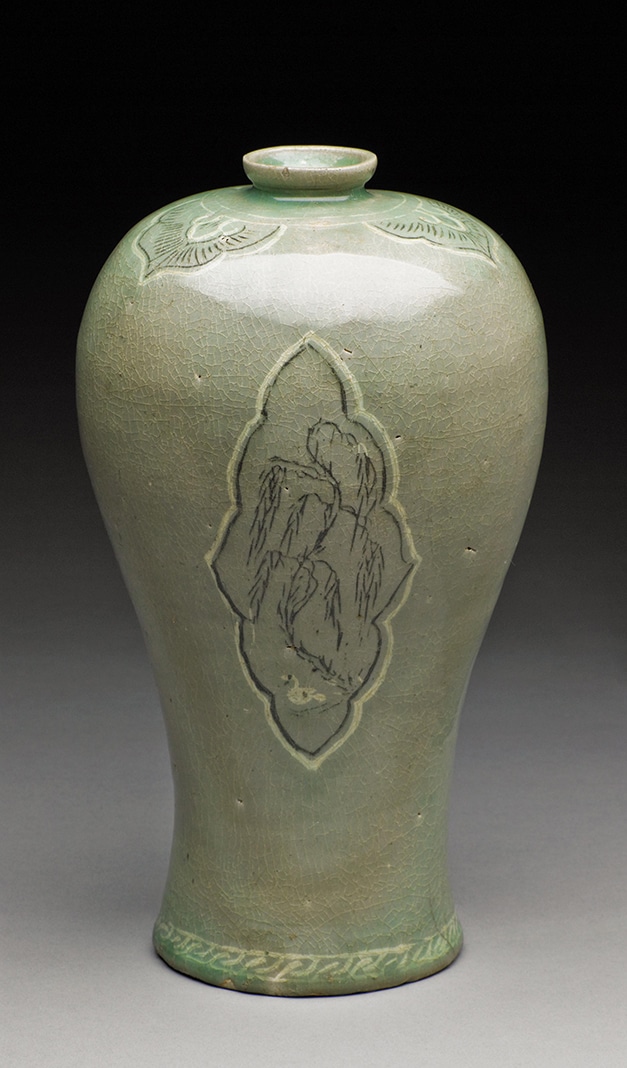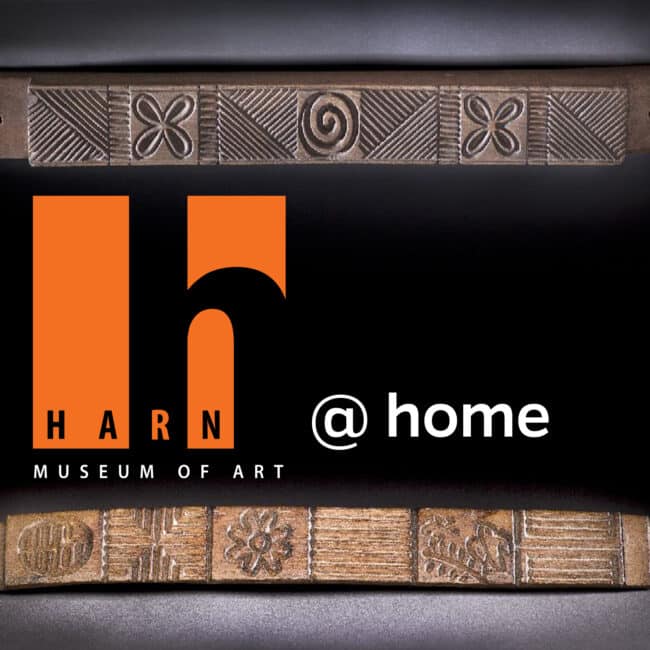What You’ll Need
- Balloon
- White Glue
- Water
- Scissors
- Medium-sized bowl
- A stand for the balloon, such as a cup or coffee mug
- Bundle of string or yarn
- Glow stick or flashlight
What You’ll Do
1. Watch the Harn at Home: Line & Light Video to learn about Olafur Eliasson’s Fivefold Sphere Projection Lamp.
2. Mix one part glue and one part water in a bowl.
- Start with mixing a cup of water and a cup of glue together then add more as needed.
3. Cut arm-length strands of string or yarn.
- The amount of string you use will be dependent on the size of your balloon and design.
4. Blow up a balloon and tie a knot at the end.
5. Soak each string individually in the glue and water mixture then drape over and around the balloon.
- Your strings can overlap, touch and drape in swags across the balloon surface. Play with draping techniques to create new patterns! How does the string interact with the curvature of the surface?
- The more string you use, and the more your strings overlap, the better it will keep its shape once the balloon is popped and removed.
6. Set aside to dry overnight. Balance the balloon on a cup or coffee mug to help keep it steady.
7. The next day, check that the strings are dry then pop the balloon.
- For best results, make a small snip near the knot to let the air slowly release and deflate the balloon. The string should retain its shape, leaving a cavity on the interior.
8. Remove the remnants of the balloon from the stiff string exterior.
9. Bring your Olafur Eliasson inspired projection lamp into a dark room then insert a glow stick or flashlight to project new and interesting designs in the space around you!
- How do the shapes change as you move your light source around the interior or exterior of your string balloon?
- What happens if you use two light sources and point them in opposite directions?
- How do the shapes interact with the space around you? How do they interact with you as you hold the lamp? Does it change if you shift your hold?
Lesson plan by Courtney Toelle, Family Programs Intern and Art History and Museum Studies Master of Arts Student and Keithley Fellow in Case Western Reserve University’s Department of Art History and Art.

